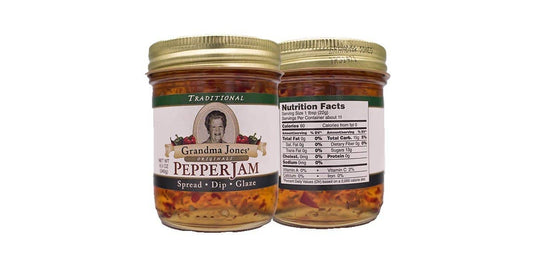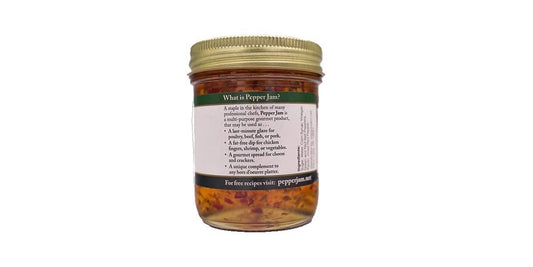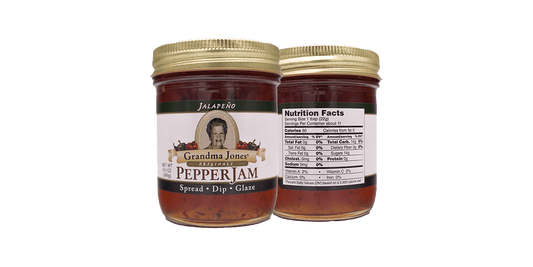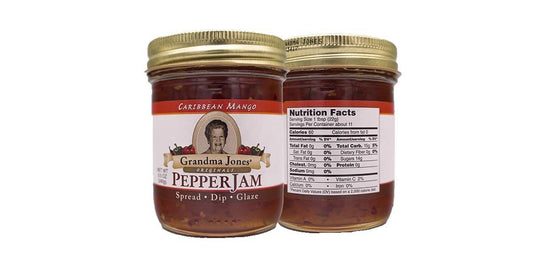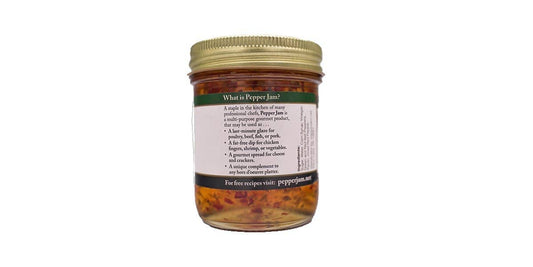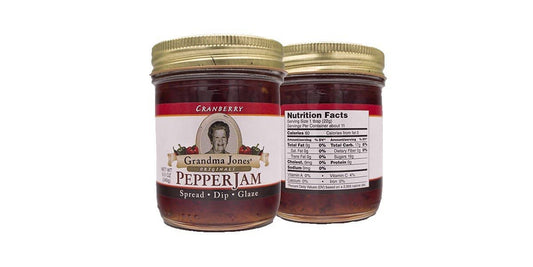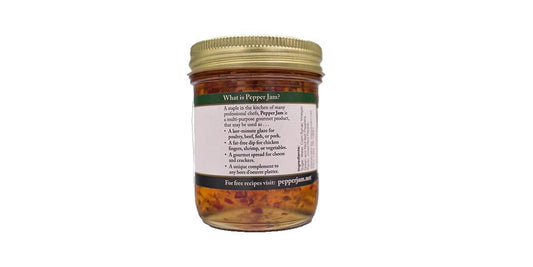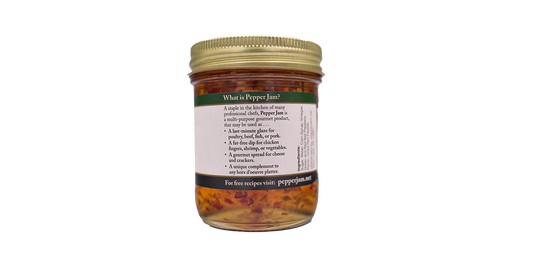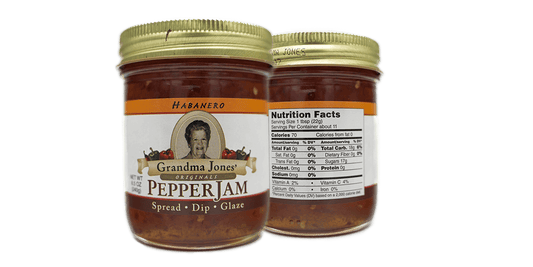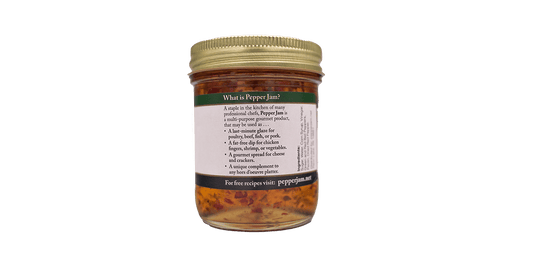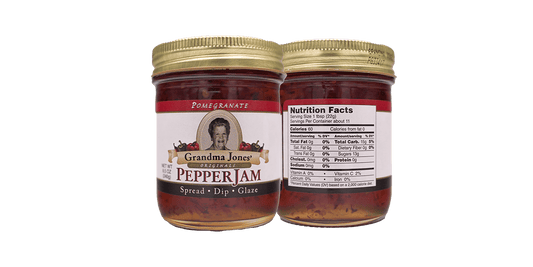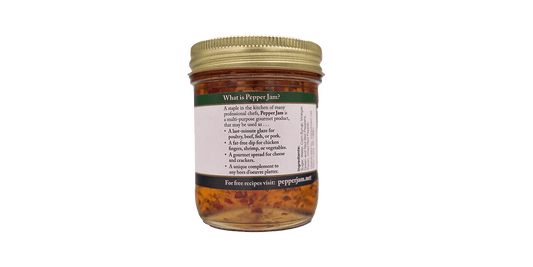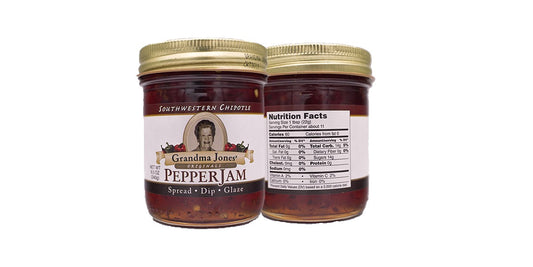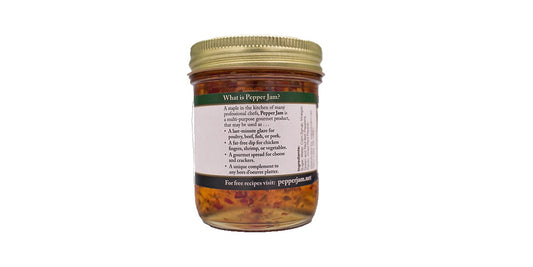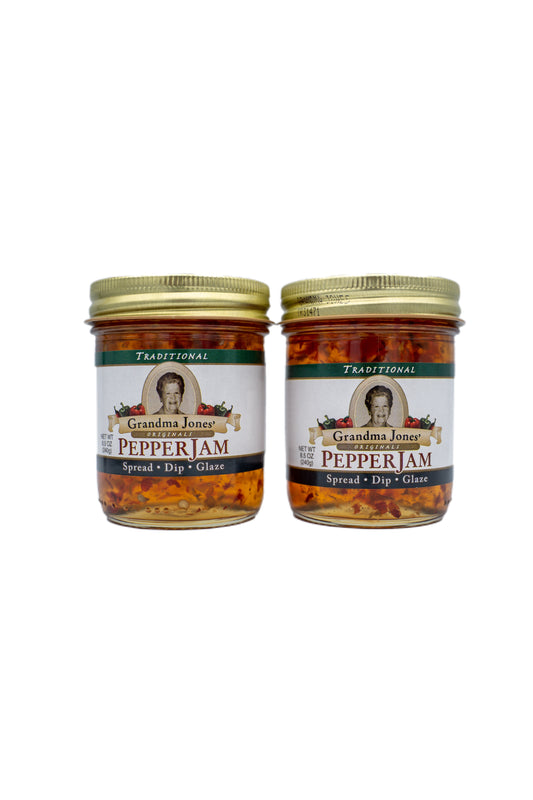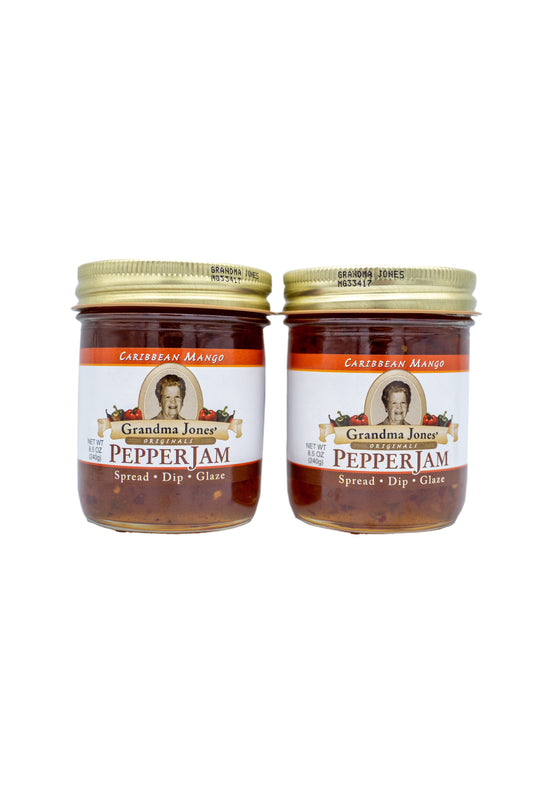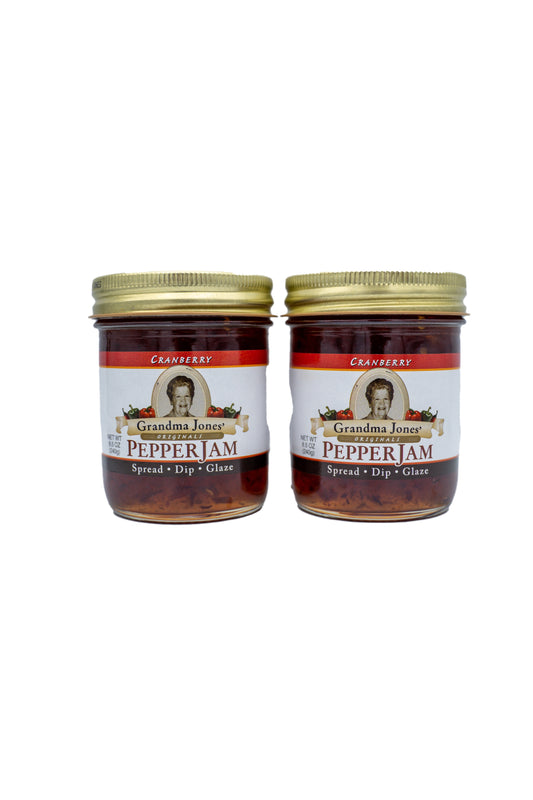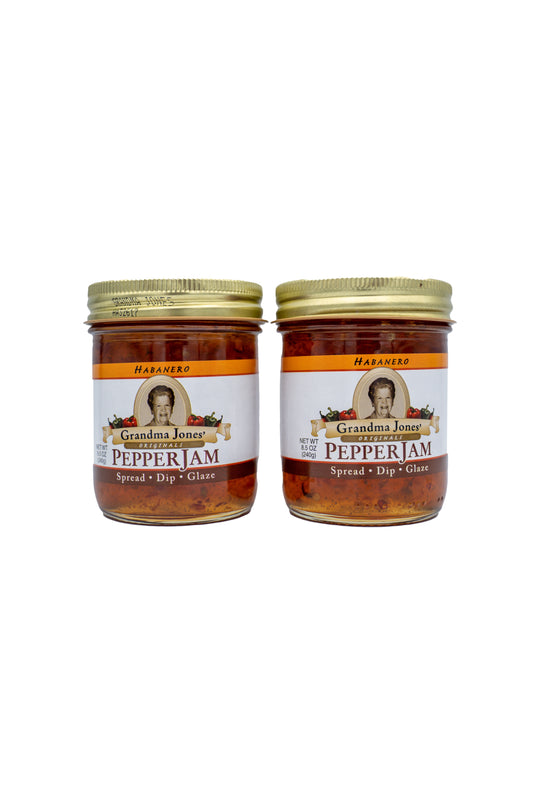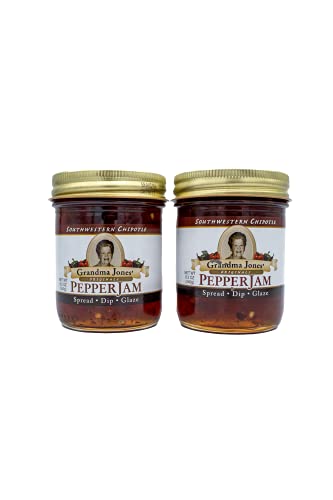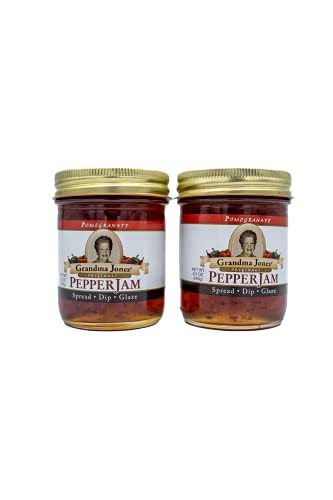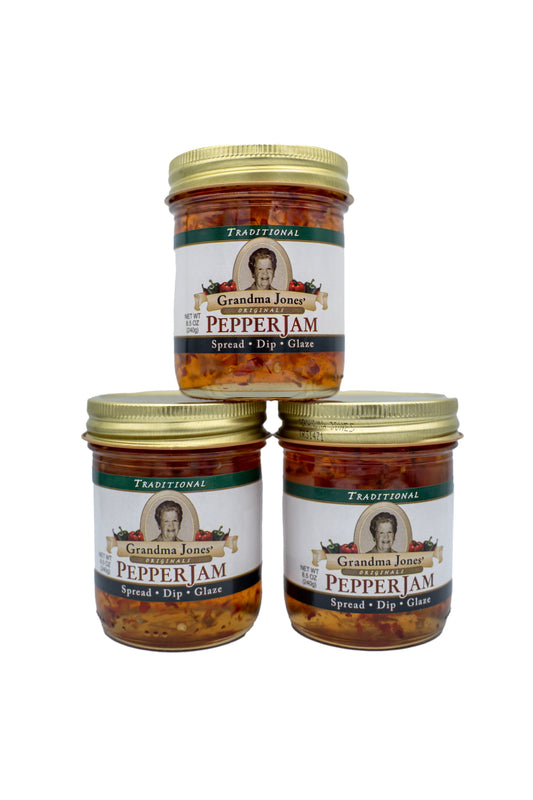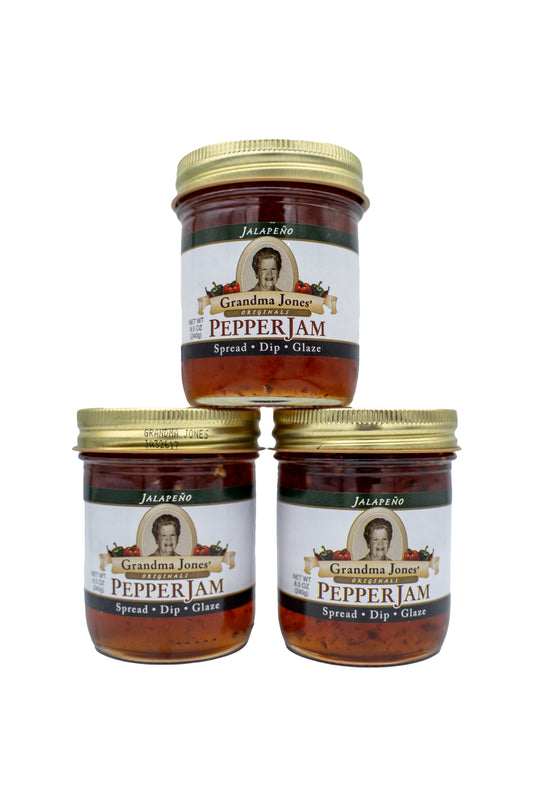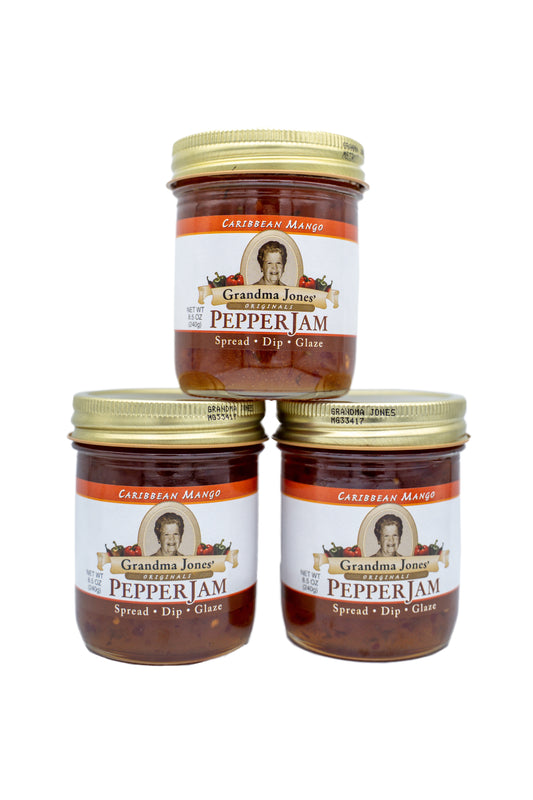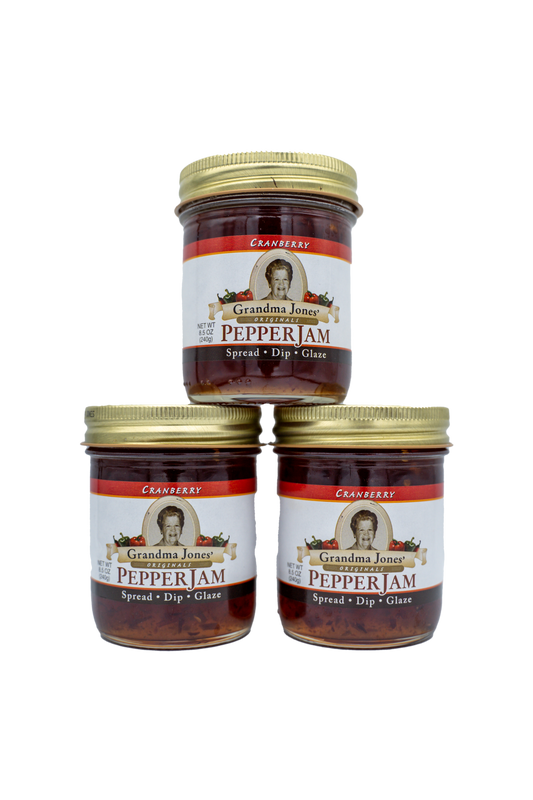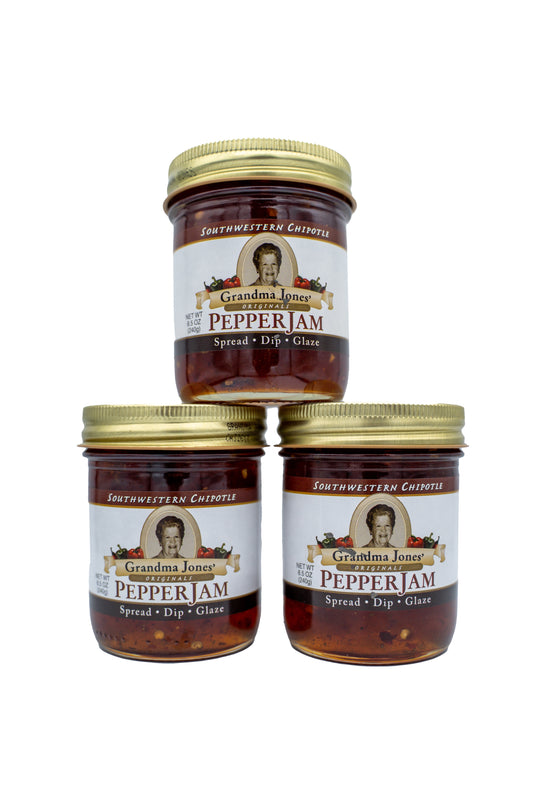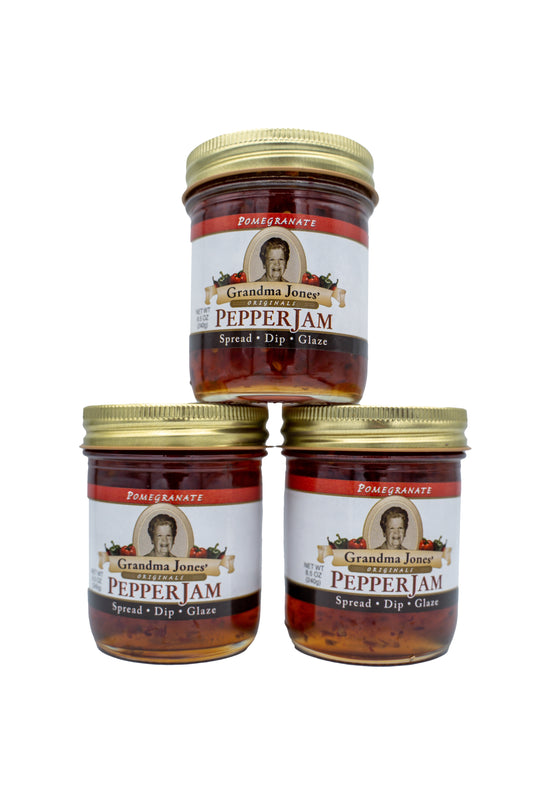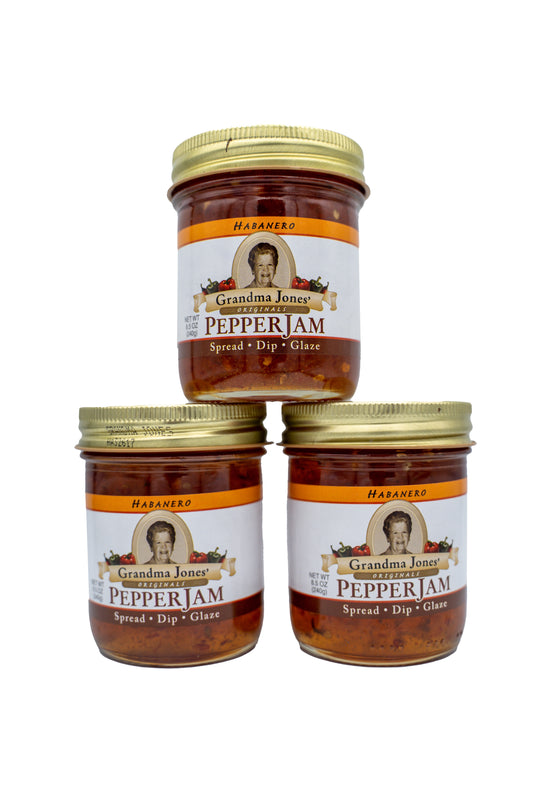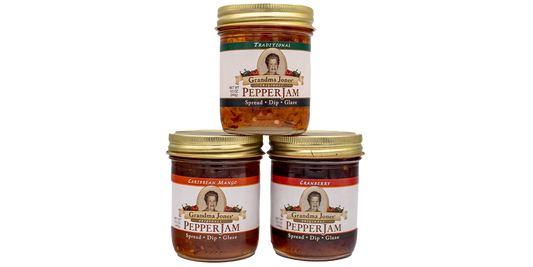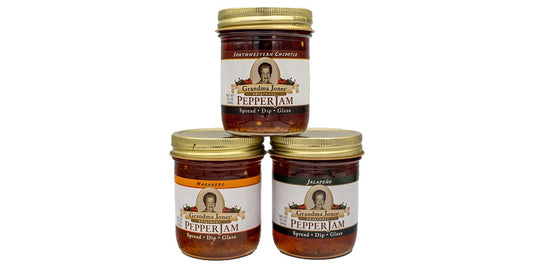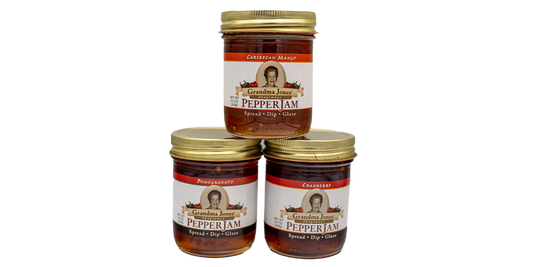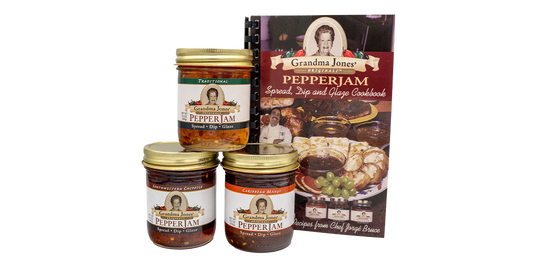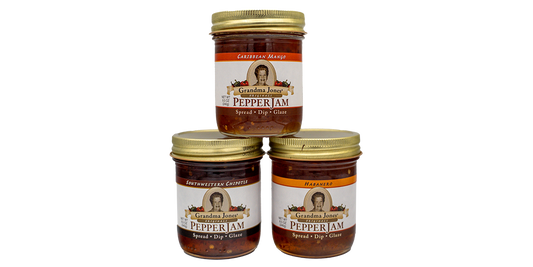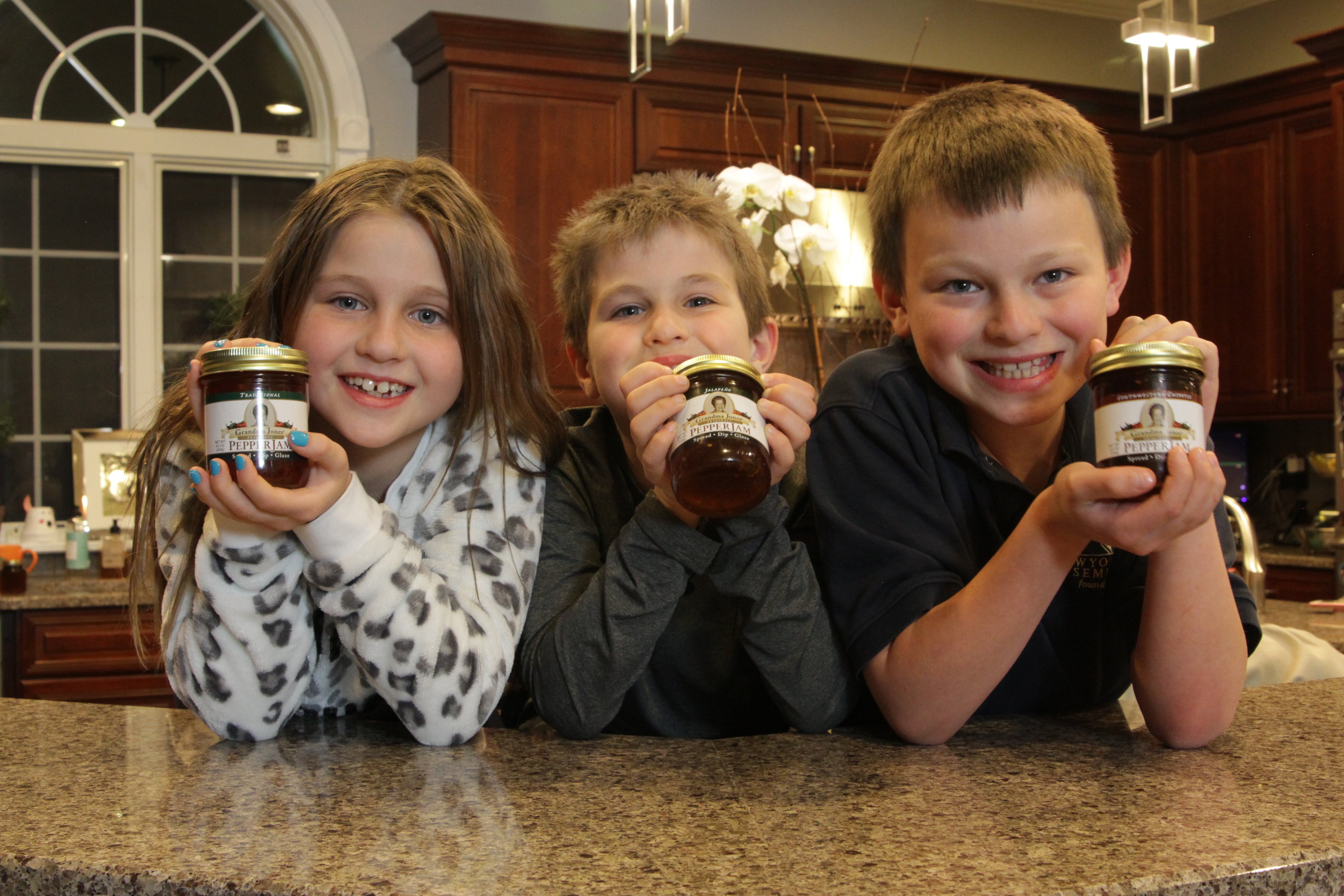
The Best Pepper Jelly Ever!
"Like it" - Buy World's #1 Pepper Jelly 'By the Jar."
Indulge in the vibrant flavors of Grandma Jones' Original Pepper Jelly, the world's #1 tasting pepper jelly! Each 8 oz jar is bursting with a unique blend of sweet peppers and spices, handcrafted with love.
-
Traditional Pepper Jelly (one 8 oz jar)
Regular price $12.99 USDRegular price -
Jalapeno Pepper Jelly (one 8 oz jar)
Regular price $12.99 USDRegular price -
Caribbean Mango Pepper Jelly (one 8 oz jar) - Free Shipping!
Regular price $12.99 USDRegular price -
Cranberry Pepper Jelly (one 8 oz jar)
Regular price $12.99 USDRegular price -
Cranberry Habanero Pepper Jelly (one 8 oz jar)
Regular price $12.99 USDRegular price -
Habanero Pepper Jelly (one 8 oz jar)
Regular price $12.99 USDRegular price -
Pomegranate Pepper Jelly (one 8 oz jar)
Regular price $12.99 USDRegular price -
Southwestern Chipotle Pepper Jelly (one 8 oz jar)
Regular price $12.99 USDRegular price
"Love it" - Don't Buy One Jar of Pepper Jelly, Buy a Twopack!"
Let's be honest, one jar of Grandma Jones' Original Pepper Jelly is a treat. But two? That's pure genius! Why settle for a fleeting taste of the world's #1 pepper jelly when you can double the delight? Think of it: one jar to savor slowly, perhaps with your evening cheese board, and the other ready for those spontaneous culinary adventures. Maybe you'll whip up a dazzling glaze, create a surprisingly delicious sandwich spread, or simply have an extra on hand for when that pepper jelly craving inevitably strikes. Don't risk the heartbreak of an empty jar! Treat yourself (and maybe a lucky someone) to a twosome of your favorite flavor, or better yet, explore two different varieties and unlock a whole new world of sweet and spicy possibilities. Trust us, two jars are twice the joy!
-
Traditional Flavor Pepper Jelly Two Pack (8 oz jars)
Regular price $24.95 USDRegular price -
Jalapeño Pepper Jelly Two Pack (8 oz jars)
Regular price $24.95 USDRegular price -
Caribbean Mango Pepper Jelly Two Pack (8 oz jars) - Free Shipping!
Regular price $24.95 USDRegular price -
Cranberry Pepper Jelly Two Pack (8 oz jars)
Regular price $24.95 USDRegular price -
Habanero Pepper Jelly Two Pack (8 oz jars)
Regular price $24.95 USDRegular price -
Southwestern Chipotle Pepper Jelly Two Pack (8 oz jars)
Regular price $24.95 USDRegular price -
Pomegranate Pepper Jelly Two Pack (8 oz jars)
Regular price $24.95 USDRegular price -
Cranberry Habanero Pepper Jelly Two Pack (8 oz jars)
Regular price $24.95 USDRegular price
Don't Buy Two Jars, A Three Pack is What the Cool Kids Do!
Alright, listen up! You could grab two jars of Grandma Jones' legendary pepper jelly. And yeah, that's pretty smart. But you wanna know what the really cool kids are doing? They're going for the three-pack! Think about it: with three jars, you've officially unlocked ultimate pepper jelly status. You've got options, my friend! Maybe one jar is your go-to for family pizza night, another is strictly reserved for your secret stash of cream cheese and crackers, and the third? Well, that's for when your coolest friends come over and you want to blow their taste buds away. Plus, let's be real, a three-pack just looks cooler. It says, "I know good flavor, and I'm not messing around." So ditch the duo and level up your pepper jelly game. Three is the new awesome!
-
Traditional Flavor Pepper Jelly Three Pack (8 oz jars)
Regular price $29.95 USDRegular price -
Jalapeño Pepper Jelly Three Pack (8 oz jars)
Regular price $29.95 USDRegular price -
Caribbean Mango Pepper Jelly Three Pack (8 oz jars) - Free Shipping!
Regular price $29.95 USDRegular price -
Cranberry Pepper Jelly Three Pack (8 oz jars)
Regular price $29.95 USDRegular price -
Southwestern Chipotle Pepper Jelly Three Pack (8 oz jars)
Regular price $29.95 USDRegular price -
Pomegranate Pepper Jelly Three Pack (8 oz jars)
Regular price $29.95 USDRegular price -
Habanero Pepper Jelly Three Pack (8 oz jars)
Regular price $29.95 USDRegular price -
Cranberry Habanero Pepper Jelly Three Pack (8 oz jars)
Regular price $29.95 USDRegular price
Let's Get Funky! Gift Ideas and Themed Pepper Jelly Three Packs!
Ready to take your pepper jelly obsession (or someone else's!) to the next level? Forget single jars and even those "cool kid" two-packs! We're diving headfirst into flavor paradise with our sensational Gift Ideas and Themed Pepper Jelly Three Packs! These aren't just collections of our legendary Grandma Jones' Originals; they're curated experiences, ready to spice up any occasion or tantalize any taste bud. Whether you're a heat seeker, a fan of fruity fusion, or just looking for the perfect gourmet gift, we've got a trio of deliciousness just waiting to be unleashed. Get ready to mix, match, and multiply the yum!
-
"Not Too Spicy" Pepper Jelly Three Pack (8 oz jars) - Free Shipping!
Regular price $29.95 USDRegular price -
Holiday Favorites Pepper Jelly Three Pack (8 oz jars)
Regular price $29.95 USDRegular price -
Spicy Lover's Pepper Jelly Three Pack (8 oz jars)
Regular price $29.95 USDRegular price -
As Seen on QVC" Pepper Jelly Three Pack (8 oz jars) - Free Shipping!
Regular price $29.95 USDRegular price -
"Great on Fish" Pepper Jelly Three Pack (8 oz jars) - Free Shipping!
Regular price $29.95 USDRegular price -
"I Love Fruit" Pepper Jelly Three Pack (8 oz jars) - Free Shipping!
Regular price $29.95 USDRegular price -
Pepper Jelly Three Pack (three 8 oz jars) + Cookbook
Regular price $29.99 USDRegular price -
"Spice Up My Chicken" Pepper Jelly Three Pack (8 oz jars) - Free Shipping!
Regular price $29.95 USDRegular price

